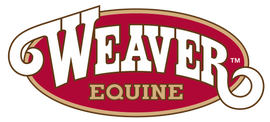
The Perfect Connection You Didn't Know You Needed
Over the years my tack room has become filled with many different pieces of equipment. Hanging on the wall I often find myself reaching for “the perfect connection”. A connection piece that is not necessarily common to all, but one that really comes in handy as a great training piece.
So, what is this unique connection?? Slobber straps! You may or may not be familiar with this leather strap good, but as a set they are a great training tool. Now to just take a moment and clarify, I am not saying that slobber straps will solve all your world’s problems or produce the best horse, nor is it your most important training tool. Great training and riding takes your seat, balance, legs, timing, practice, education and at the foundation pressure and release. (Pressure and release which you are asking with intent and knowing when to release the question.)
Slobber Straps add weight and feeling to the bit, which in turn allows for a clear communication, feel and release in training. For young horses especially, I love slobber straps because it allows them time to realize there is a change or transition coming and start to process that change. They are only babies; they need a little bit of grace room! Two, I am not a perfect rider!! Yep, you heard me right, we are not all perfect and that is okay. Our horses are the most forgiving creatures, but we should not take that for granted. Keep practicing, keep learning, keep growing, but ultimately have FUN 🙂 Sometimes I need to go back to a refresher course of softening exercises and they just help act as a barrier between my quick hands or mistakes and really exaggerate the release when my horse gives me the answer I am seeking.
With that being said, I wanted to give you a few reasons why I LOVE my slobber straps. I often travel up and down the road for Weaver Leather and people are constantly curious as to what they are and how they work. So here goes it!
Beginner Riders: because they allow the horse time to process a change coming, slobber straps are great for someone new to riding. When I put someone on a nice old broke horse while I am teaching, I don’t want to “ruin” the softness that horse has. Although, it would take a lot too truly “ruin” a soft horse. Slobber straps connect perfectly to a simple snaffle bit and just allows the trained horse to have a chance to figure out the new rider and prevents and sort of “forgives” improper cues etc. with your hands, while saving the horse’s mouth. AND again, it exaggerates the release! This is how horses learn, pressure and release. When asking your horse for a response, you apply pressure. When the horse responds to the question asked, you release your pressure; rewarding your horse for a correct response.
Rope Reins: slobber straps, especially the Ken McNabb Horsemanship style attach to his yacht braid rope rein design very easily! I love rope reins. They are one piece, easy to manage, feel great in my hands, add additional weight and “feel” to the bit and I don’t lose them 🙂 What more is there to say? I feel like I have great communication and timing with my horse. I know what I want to ask and I know when to release it.
Ranching: slobber straps are easily set up with a mecate. The slobber straps help protect these reins from excessive wear. Mecate reins are a very traditional ranching piece, esp. in Montana, where I live. In a day’s work a horse will drink out of many creeks and what better way to save your reins than add some leather. The benefits of a properly tied mecate setup are huge too! (If you need some tips on this give me a shout out, I would love to help with a little video or diagram on properly tying your mecate). A mecate can act as an extra lead attached to your rein, but tied properly it does not apply pressure to the bit. So you can safely tie up your horse, step off and use it as a lead to go doctor or process a newborn calf, or stick in your belt loop hole when you are breaking out a young colt. I’ve also found it handy to use as a “spanker” to reinforce my “ask” in a stubborn or tantrum throwing horse. Having a lead will allow you to step off and help direct a colt over a log, creek, or simply as a backup option in the very off scenario I get bucked off in the middle of Montana; I might stand a chance of not walking a LONG ways home 🙂
Snaffle Bit: slobber straps are most commonly attached to a snaffle bit, although they can be used on a leverage bit. I LOVE snaffle bits! In our training program of 60+ ranch horses a snaffle bit is where you start. I don’t care if you have a trail horse or top notch cutting horse, he needs to be able to know the foundation of softening exercises in a snaffle bit, before he can transition into anything else. It is a mild bit and can teach so many things. Any job should be able to be achieved in it!
There you have it 🙂 Just a few reasons I love this perfect connection. While they may not be the route you love, you may also find this training tool a must-have piece hanging in your tack room. I’d love to know if you have ever tried them and what you think? Everyone is different, we all have different setups we will love based on what feels and works best for us and our horse.
Until next time, HAPPY TRAILS!
Michaela Gannett, Weaver Leather Equine Marketing Associate









